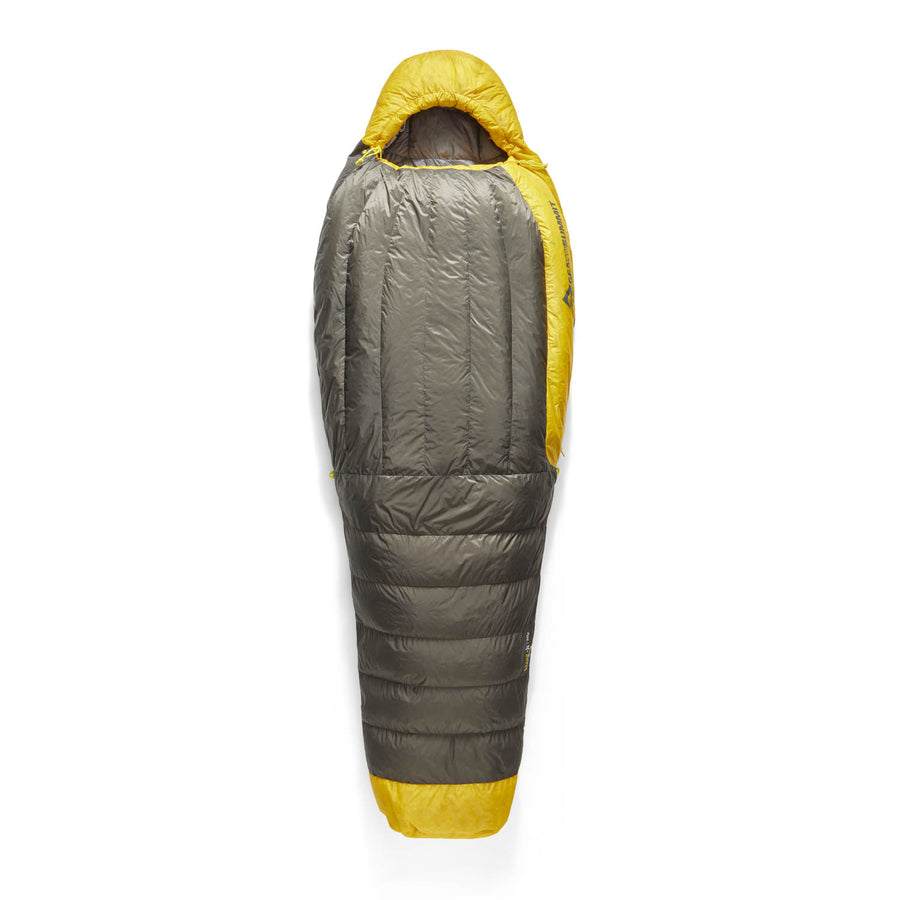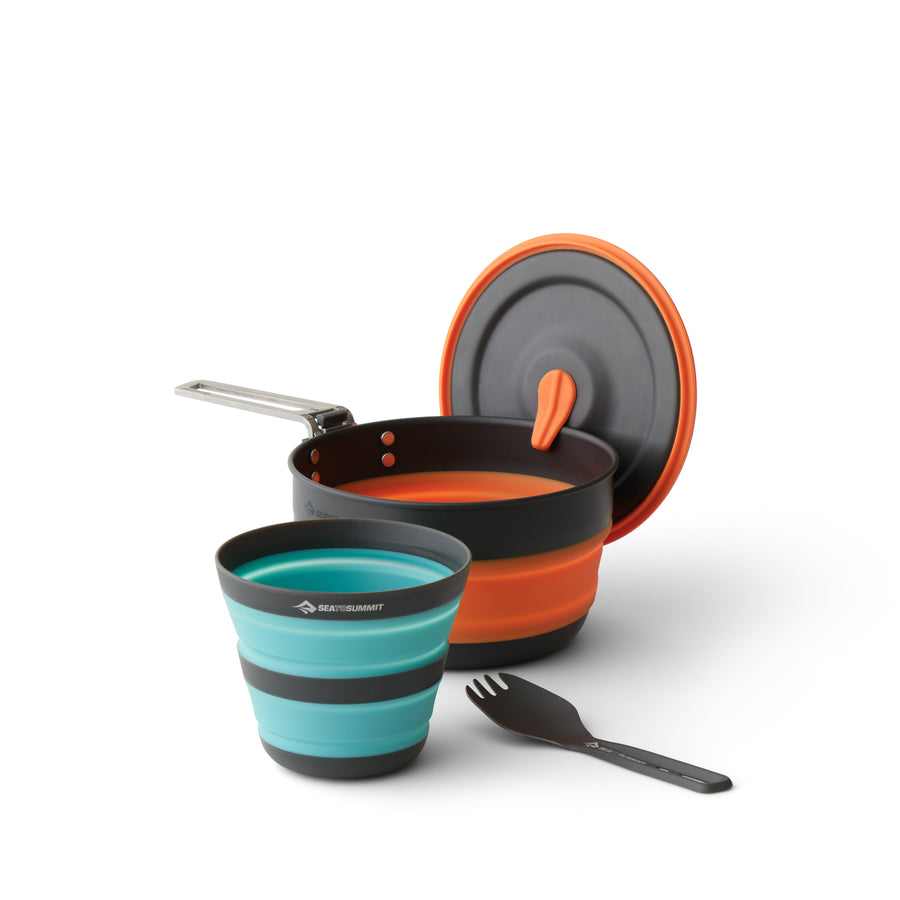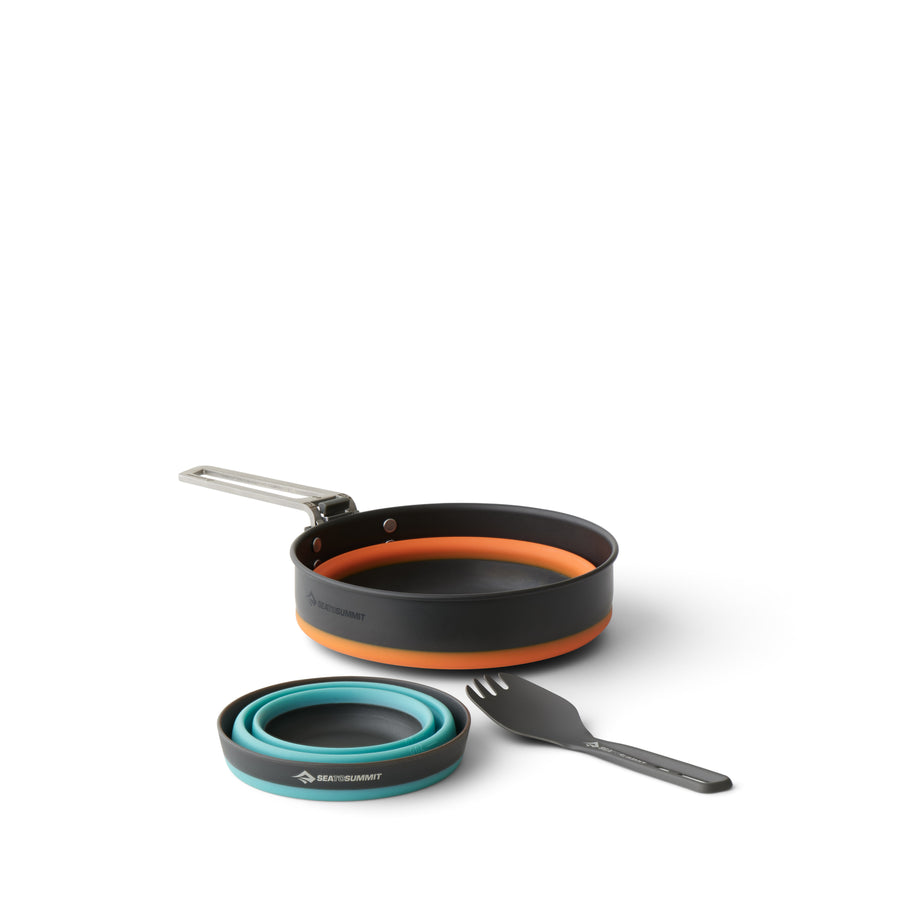Dehydrate Your Trail Food

Who says you need water in your food? Dehydrate your vittles and you'll carry less weight, save money, and eat better.
Dehydrating fruit is great—but there's so much more you can do with these magic machines.
To put it simply, I go bananas over dried apples. I love their tangy, slightly sweet zip while I'm hiking. Problem is, the store-bought variety comes complete with chemical preservatives and isn't cheap. That's why I started drying my own.
Then one day, after dehydrating enough apples to feed a battalion of backpackers, I realized as I stared at my home dehydrator that it was time to go beyond fruit. Here was the means of sucking out the water—and therefore weight—from many more foods, while preserving the vitamins, minerals, and taste! I dove in head first, making a few mistakes along the way, but in the end, I came up with a trail diet that's not only loaded with variety, taste, and nutrition, but also economical. In addition, I discovered that drying, whether done in an oven or dehydrator, is pretty darned easy.
Here's an introduction to dehydrating individual ingredients, all of which you can use to make fabulous one-pot trail meals (see the recipes below). The recipes also include snacks, sauces, and side dishes. Learn how to dehydrate the gourmet meals you cook at home so you can enjoy them on the trail.
Dehydrator Basics
The secret of dehydration is to dry food at a temperature high enough to get rid of the water, but not so high that the food cooks. Moisture, which accounts for 60 to 90 percent of a food's weight, acts as a natural petri dish for the yeast, molds, and bacteria that cause food to spoil on the trail.
Drying time depends on a variety of factors ranging from the size of the food to the relative humidity of the air in your kitchen, so judging doneness is a skill learned through practice.
Fruits and vegetables:
These dry best between 120° and 140°F. When done, fruit feels more leathery than sticky and vegetables are brittle.
Very fresh fruits and vegetables make the best dried products. Before drying veggies, blanch them until they're slightly tender to help preserve flavor, color, and texture. Tomatoes, mushrooms, and onions are the exceptions; they should be chopped and placed in the dehydrator without other preparation.
Meats:
Meat can be either cooked and preserved or made into jerky. Meats dry best at or above 145°F and are dry and flaky when done. Jerky is done if it cracks like a green twig when bent.
Dried precooked meat is a spoilage-free, salt-free additive for soups and stews made in the field. After trimming off all visible fat, steam or roast red meat, fish, and poultry. Cool, cut into 1/2-inch cubes or 1/4-inch-thick slices, and dry. Before drying lean ground beef, sauté it, then remove as much fat as possible by rinsing the meat under hot water or draining it on layers of paper towels.
Ever-popular jerky is simply dried strips of raw meat seasoned with salt, soy sauce, ginger, and a variety of other seasonings. The USDA recommends cooking meat to an internal temperature of 160°F to destroy bacteria before dehydrating; call its Meat and Poultry Hotline at (800) 535-4555 for more information. Beef, game meats, and fish—especially trout, pink salmon, halibut, and cod—all make good jerky. To reduce the risk of food-borne illness, avoid using uncooked poultry or pork to make jerky. Dried tofu pleases the vegetarian crowd and carnivores looking for a change of pace. Marinate firm tofu, then dry it at 160°F until brittle.
Rice and pasta:
Save money and cooking time on the trail—and avoid the additives and preservatives in instant foods—by precooking rice and pasta. Most of the vitamins in instant rice are lost during processing and must be added later. Cook up an extra big batch of brown rice or whole-grain pasta for dinner at home, then dry the leftovers for your next camping trip to get the full nutritional benefit of these foods. Both will rehydrate in warm water.

STORING DEHYDRATED FOOD
Keep dehydrated vittles in airtight containers in a cool, dry, dark place. Fruits and vegetables last about a year. Dried meats can be kept at room temperature for up to 2 weeks, and jerky for about a month; refrigeration or freezing extends the shelf life of both.
HOW TO USE DEHYDRATED FOOD ON THE TRAIL
Toss dehydrated foods in a cook pot, and let them absorb water while they simmer, or presoak them to cut cooking time. Putting your dried dinner veggies in a partially filled water bottle to soak at lunchtime will make them more tender later. A cup of dried food requires approximately 1 cup of water to revive; use hot water and rip apart the food for faster rehydration.
With a store of dried staples, vegetables, meats, and herbs, you'll have everything you'll need to create simple one-pot wonders in camp. Or, make a hearty soup broth or pasta sauce at home, dry it, and bring it back to life in camp by adding 3 parts water to 1 part dried ingredients. Packaged dinners such as rice or noodles and sauce take on new qualities—in both taste and nutrition—when you add dried veggies or meats. You can even perk up oatmeal with a handful of banana chips.
MAKE DEHYDRATED HIKING SNACKS
Once you have the basics down, let your imagination take over. Some of my home-dried favorites are between-meal foods that help lift feet and spirits during tough uphill slogs or through the gray misery of a cold, rainy day.
Here are a few ideas:
YOGURT TARTS:
Drop teaspoonfuls of flavored yogurt onto a tray and dry them into deliciously tart drops. Although yogurt is a milk product, its acidity makes it safe for home drying.
SEASONED VEGGIE CHIPS:
For tasty, healthful trail snacks, dry zucchini slices dipped in tamari or tomato rounds sprinkled with dried basil. The more adventurous can puree vegetables to make vegetable leather (see below).
BAGEL CHIPS:
Slice bagels into rounds about 1/8 inch thick, season with garlic powder or cinnamon sugar, and dry for a couple of hours until crisp.
TRAIL MIX:
Dry and combine chunks of different kinds of fruit for a sweet, high-energy treat. Apples work well. Trust me—I've dried bushels of them.
FRUIT LEATHERS:
Evenly spread (1/4 to 1/2 inch thick) pureed fresh fruit onto the plastic dehydrator-tray insert for making leathers or a tray lined with freezer, wax, or parchment paper, then dry for 8 to 16 hours until it can be peeled off as fruit leather. Blend apples, cranberries, and oranges, or whir a handful of almonds and a dash of nutmeg into an apricot puree. Or use applesauce from a jar—it now comes in watermelon, berry, and peach mango flavors.
Written by Diane Bailey for Backpacker and legally licensed through the Matcha publisher network. Please direct all licensing questions to legal@getmatcha.com.










![Frontier Ultralight One Pot Cook Set - [3 Piece]](http://seatosummit.com.au/cdn/shop/files/FrontierULOnePotCookSet1P3Piece1.3LPotWithS-BowlandCup_ACK027031-122114_PRIMARY-1200x1200-9c6bd91.jpg?v=1749433473&width=900)
![Frontier Ultralight One Pot Cook Set - [3 Piece]](http://seatosummit.com.au/cdn/shop/files/FrontierULOnePotCookSet1P3Piece1.3LPotWithS-BowlandCup_ACK027031-122114_ADDITIONAL_1-1200x1200-9c6bd91.jpg?v=1749433473&width=900)
















